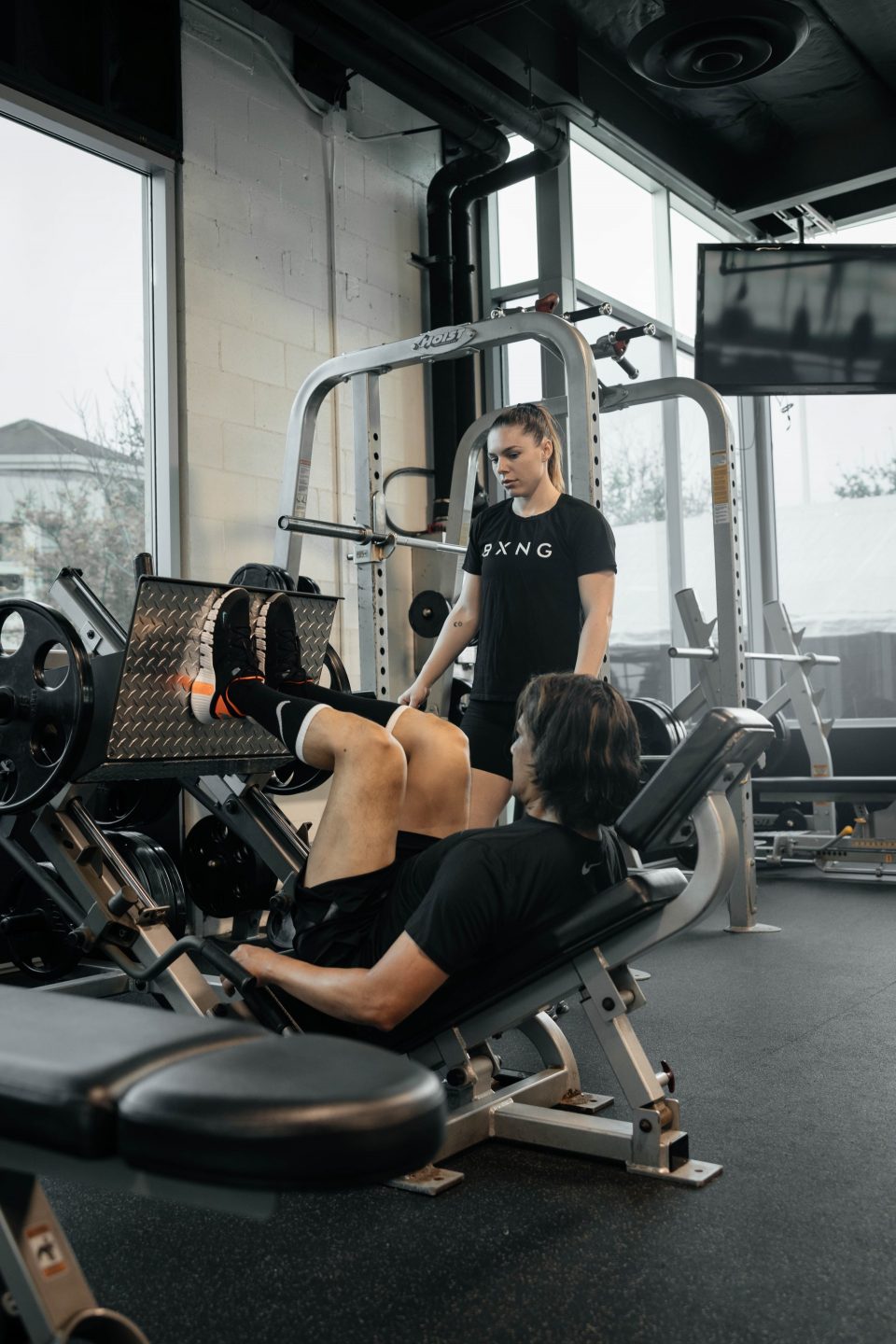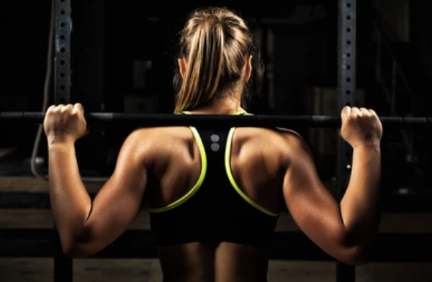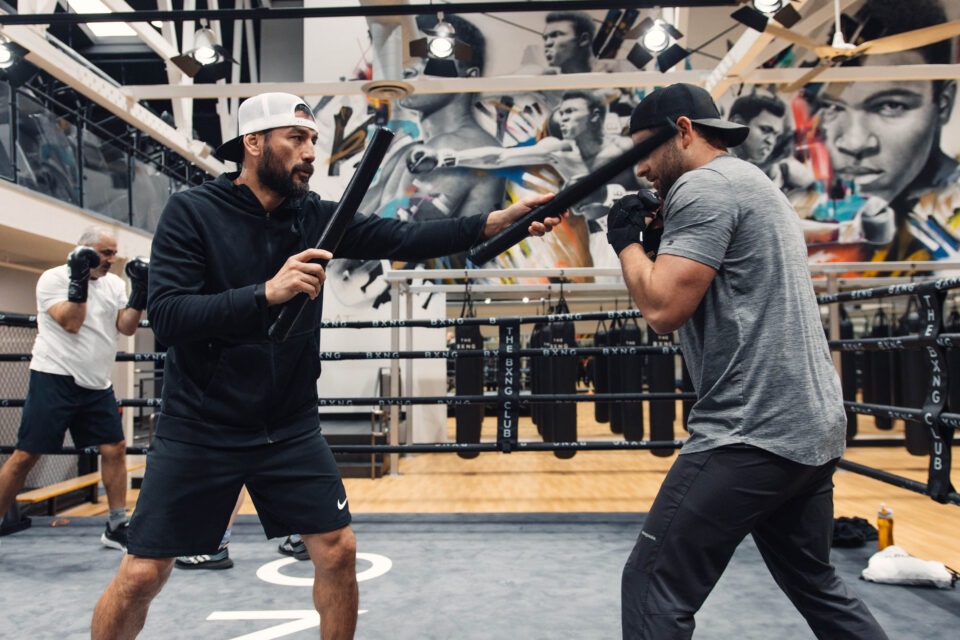The deadlift is often known as one of the more intimidating movements to attempt, but once mastered, it can be highly beneficial to gym-goers of all skill levels.
Learning how to do a deadlift is like an induction into the world of lifting. A deadlift has benefits that are incredibly important when building full-body strength.
Deadlifts encourage full-body strength, proper hip function, core strength, and overall body stabilization. The most important factor when mastering the deadlift is finding the right form. To reap the benefits of deadlifts, you must always prioritize proper movement.
You don’t have to be a weightlifter to start deadlifting. Deadlifts are versatile and are a fundamental movement used by various types of athletes. Think about it: bend down, grab the object and stand up. It’s super simple and so effective.
Learning how to deadlift can lead to healthier legs, a stronger core, and more calories burned per workout – these are just a few of the reasons why deadlifts should be a regular part of your workout routine!
How to Deadlift
Deadlifts are a compound movement that specifically targets muscles in the posterior chain. The posterior chain consists of the calf muscles, glutes, and spine. A deadlift activates all these muscles and improves functional movement, strength, and mobility.
Whether you’re a beginner or a long-time lifter, the deadlift is a true staple. It is critical to start with a solid set-up.
Stand feet with hip to shoulder-width apart. Think of your shins getting pretty close to the bar.
Hinge your hips and sink back into your glutes while keeping your spine straight. Make sure to always keep your eyes looking forward. It is a good rule of thumb to look straight ahead and keep your eyes focused the entire lift.
Squeeze the bars with your hands as you sit back into your hips. Pull your shoulders back and engage your lats.
Push your feet into the floor to straighten your legs and lift your chest up.
Keep your stance tall when you come back up.
Come back down and resist the downward pull of gravity as the weight lowers.
Pause and repeat.
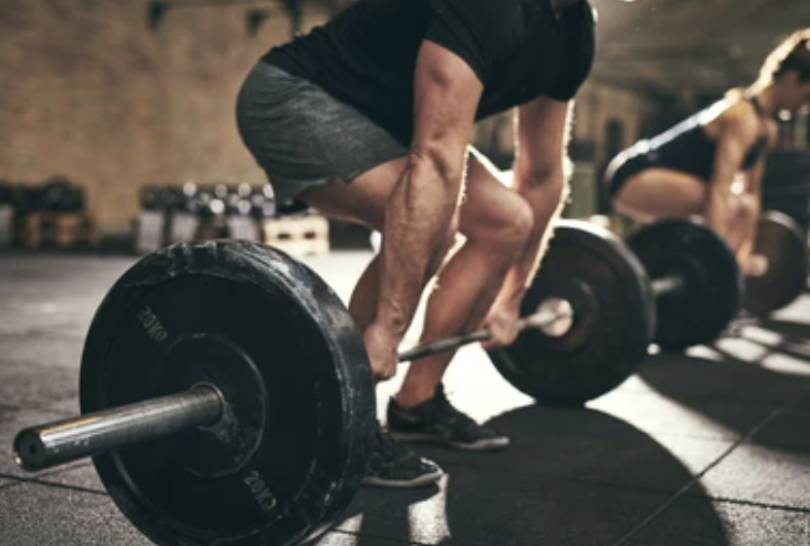
Types of Deadlift Exercises
There are various types of deadlift exercises and variations. After you’re comfortable with a conventional deadlift, you can begin to learn about other deadlift variations. It is strongly recommended to record yourself performing a conventional deadlift to make sure that your form is on point. This way, you can identify issues and correct them before you start to experience muscle strain.
Romanian Deadlift
Be prepared for the hamstrings to go to work! Every rep begins from a standing position, with the weight at thigh level rather than by your shins. Please do not load the barbell to the weight you’d use for a conventional deadlift – START LIGHTER and build your way towards the higher weights when you feel more comfortable with this new style of lifting.
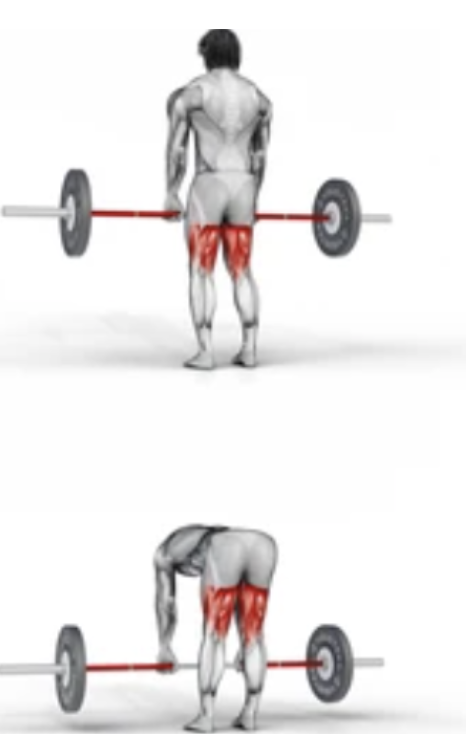
Begin with feet hip-width apart and bar close to shins.
Take a deep breath and begin to engage the core.
Tip your torso forward to grab with straight arms at a shoulder-width distance.
Keep your back flat and pull the bar from a standing position.
Position your knees so they feel ‘soft’ and ‘back’ in a way you would describe as ‘flat’. Begin to push your hips back and lower the weight in front of your legs.
Stop when you feel a stretch and return it to the starting position.
Single-Leg RDL
Next up – SINGLE LEG. A single-leg RDL forces your muscles to work unilaterally. Make sure to start out going light. It’s usually recommended to try 1⁄4 of the weight you would use for a conventional deadlift and increase from there.
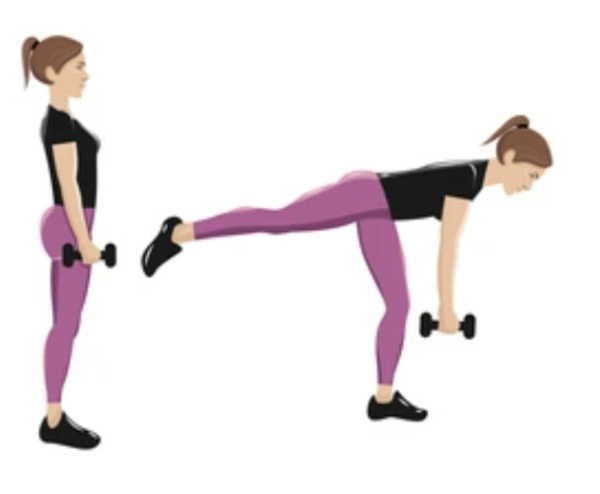
Stand with your feet tucked under your hips.
Press one leg into the ground and shoot the other leg back.
Lower weight to mid-shin (depending on which leg is touching the floor will determine which hand you use).
Keep your core tight + back flat while bringing your back leg down to meet the other leg.
Sumo Deadlift
One of the most popular deadlift stances is the Sumo Deadlift. You will widen your feet for the sumo deadlift and ramp up how much weight you can stack on.
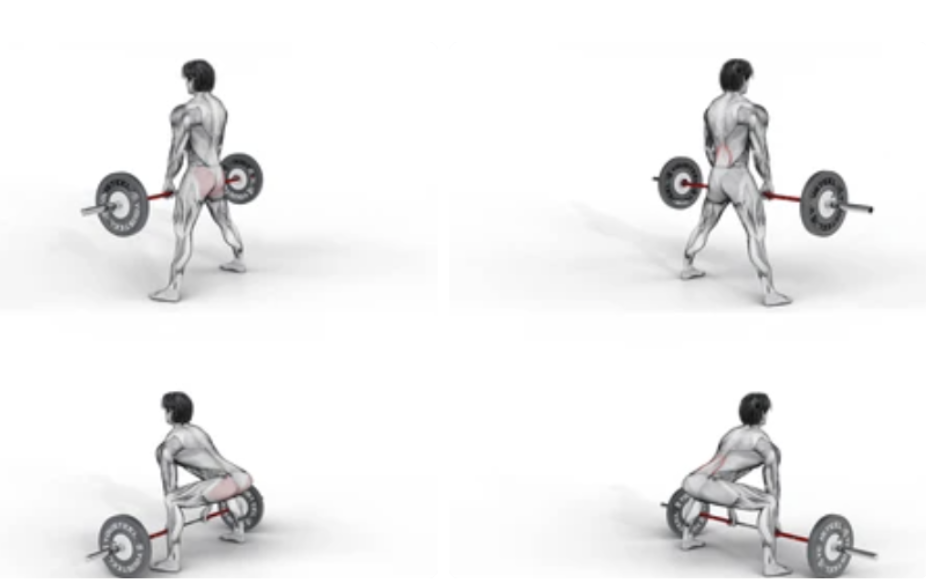
Stand with feet about twice shoulder-width apart (think toes pointed outward).
Position the barbell close to the shins – you should notice that your toes peak out just from the front side of the bar.
Engage the core and keep the back straight with a bend in the knees.
Hinge forward and grab the bar with both hands.
Press through your heels (one of the best tricks!) to push off the ground and thrust your hips forward.
Lower the bar back to the floor.
Hex Bar Deadlift
A hex bar, or a trap bar, looks like a giant hexagon with handles. You step inside the bar rather than reach in front. A hex bar deadlift is a great way to force yourself into better form. You are less likely to round or injure yourself.
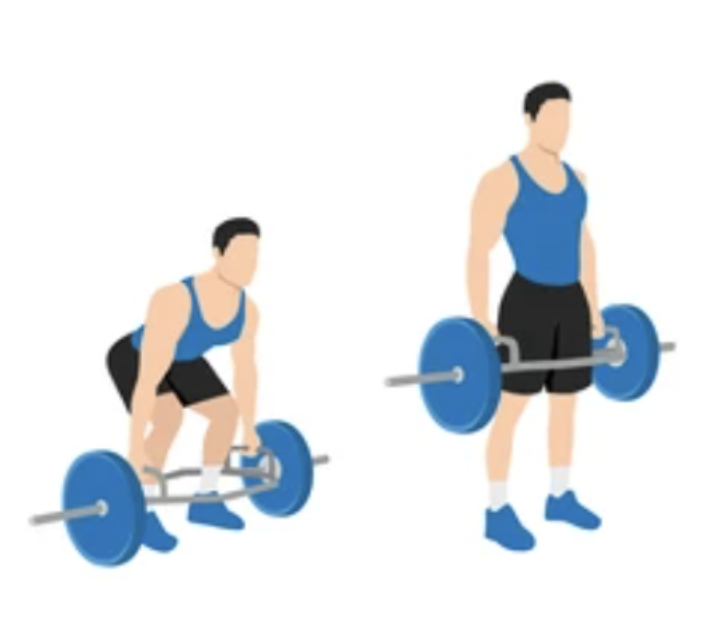
Begin right in the middle of the hex bar with feet hip-width apart.
Push your butt back and bend your knees until your arms reach the handles.
Prop your chest out and pull your shoulders up and back.
Keep back flat and arms locked out.
Hinge at hips and bend knees to lower back to starting position.
Deadlift Benefits
Since the deadlift has many variations, you can keep switching things up (mentally and physically!). The American Council on Exercise noted that posterior-chain training is critical to overall strength, power, posture improvement and flexibility. Think of a proper deadlift as a “chain-like” movement – your body is in pure sync. The stronger the posterior chain, the stronger all movements are.
Full Body
The leg muscles are the primary movers in deadlifts, but the back, core and upper body are still used to stabilize weight during a deadlift.
Power
In the end, performance is sometimes what matters most to some athletes. Deadlifts are associated with power production and jumping.
Injury Prevention
Improve overall full-body strength and find yourself wheeling off injury. You will also learn more about the mind-body connection while learning how to deadlift and increase core strength. It is so important to remember that deadlifts are dangerous if performed improperly.
A deadlift movement includes many muscle groups and core stabilizers, and it improves daily life movements and dedicated workouts by strengthening the posterior chain.
Bone Density
Bone mineral density relates to how strong your bones are. Deadlifts help maintain bone density by stimulating bone development. This also goes for any other type of resistance training. Since the deadlift is a full-body movement, this is happening all over the body during a deadlift.
Cardio and Lean Muscle
Because a deadlift is a functional movement – your cardio and endurance will increase while encouraging lean muscle growth. Deadlifts are generally the heaviest lifts you will do and incorporate all muscles. Get ready to increase explosive power, endurance and overall athletic performance.
Increase Grip Strength
Your wrists have to work extremely hard while deadlifting. They are the only thing to keep the weight from falling while also connecting you to the weight.
Get the Best Benefits from Your Deadlift Workout at The BXNG Club!
Get ready to learn more about deadlifts and how to get stronger with The BXNG Club! Try a complimentary personal training session and take yourself to the next level.
